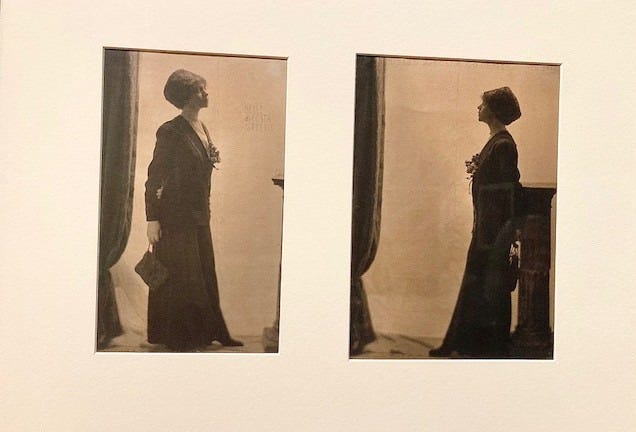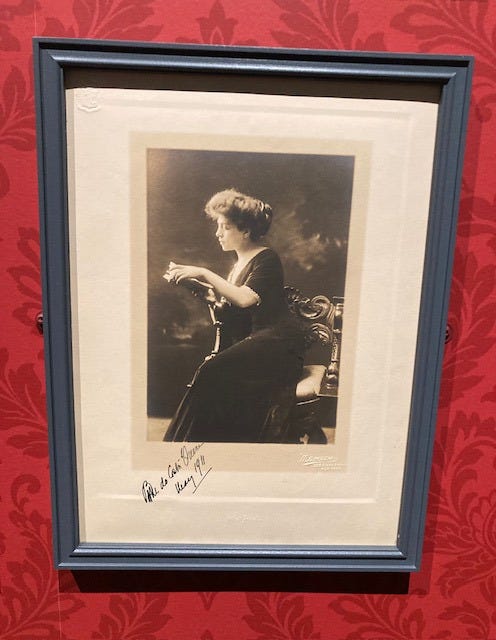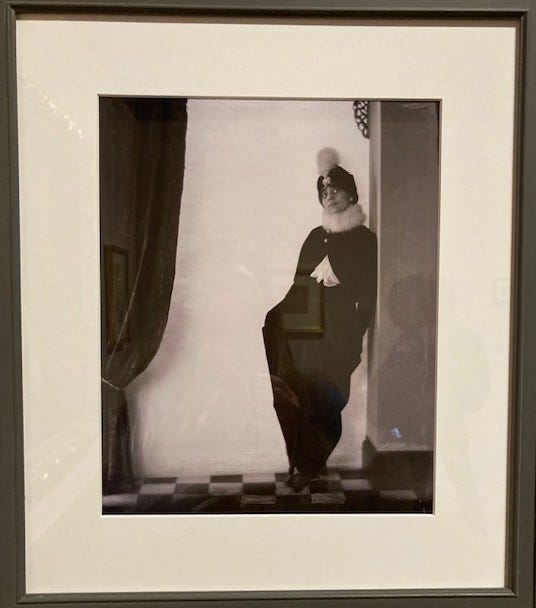Hi History Lovers!
A few weeks ago I treated myself to an afternoon at the Morgan Library & Museum, one of my favorite New York City museums. To mark the 2024 centenary of its opening to the public, the Morgan is hosting a major exhibition on the life and career of its inaugural director, Belle da Costa Greene (1879–1950), one of the most prominent librarians in American history.
In 1905, Greene accepted the position of librarian to J. Pierpont Morgan, the leading financier of the Gilded Age, who was building his new private library at 225 Madison Avenue. Once the library was completed in 1906, Greene’s responsibilities grew apace with Morgan’s expanding collection, from cataloguing his current works to curating new acquisitions, arranging publications and exhibition loans, and meeting with art historians and dealers both at home and abroad, including Bernard Berenson, a prominent Lithuanian American art historian with whom she is believed to have had a longstanding romantic relationship. By all accounts, her life was one of glamour, international travel, riches and celebrity.
But there was a hidden side to Greene, a secret that if revealed would have destroyed her career.
Greene was born Belle Marion Greener to a prominent African American family in the tawny enclave of Georgetown in Washington DC. Her father, Richard Theodore Greener, was the first Black graduate of Harvard University, a lawyer, and racial justice activist who went on to serve as dean of Howard University School of Law. Whereas Richard believed his children should live proudly and openly as Black, their mother, Genevieve Ida Fleet, encouraged Belle and her siblings to take advantage of their light skin color and pass as white. The push-pull led to the parents’ separating and Richard leaving the household.
Once he did, Belle’s mother changed the family name to Greene. Belle took her personal reinvention a step further by changing her middle name to “da Costa” and claiming Portuguese ancestry.1
The exhibit follows a young Belle from her student days at an otherwise all-white young ladies academy in Massachusetts — a group photograph tellingly shows a young Greene standing off to the side in shadow — to her job at the Princeton University Library in 1902 through her accepting the position with Morgan.
Greene’s international reputation as an authority on rare books and Medieval illuminated manuscripts enabled her to protect Morgan from forgeries and price gauging. In return, the flinty Morgan treated her with deep affection and nearly unprecedented professional respect, granting her all but unlimited purchasing power. Backed by one of the richest men in the world, Greene became a frequent and formidable face in the top auction houses in the US and Europe.
Pierpont Morgan died in 1913, leaving Greene fifty thousand dollars in his will, the equivalent of $1,615,146.46 today. By then, she was earning an annual salary of $10,000 at the library, an enormous sum at the time, especially for a woman.
She continued her role under Pierpont’s son and heir, Jack Morgan. When the library opened to the public in 1924 as the Pierpont Morgan Library, Greene was named director, a position she held until her retirement in 1948.1
Along with celebrating Greene’s incredible career accomplishments, the exhibit does a good job of delving into the woman behind the glamorous public face. We know that her personal art collection embraced works from medieval to modern. Likewise, her sartorial sense matched her bold spirit, as seen in this circa 1911-1912 photo depicting her wearing a feathered hat and harem pants. Her longterm love affair with the married Berenson, a Jew converted to Catholicism, is also explored.
“Just Because I am a Librarian doesn’t mean I have to dress like one.” — Belle da Costa Greene
The exhibit also addresses a deeply personal tragedy: the death of Greene’s beloved nephew, Bobbie, who took his life after his white fiancee discovered his ancestry and broke off their engagement.
Unfortunately for us, Greene burned all her diaries and personal letters prior to her 1950 death, so we are largely left to imagine the emotional toll that decades of concealment must have cost her.
The exhibit runs through May 4th, so if you have the opportunity to visit and learn more about the legacy of this amazing woman, definitely do!
Find IRISH EYES and the sequel, STARDUST, on Amazon, Barnes & Noble, Bookshop, Target, Walmart and wherever books are sold.
Signed copies are available at these booksellers:
Barnes & Noble Upper West Side, Manhattan
Barnes & Noble, Brick Plaza, NJ
Barnes & Noble, Holmdel, NJ
Barnes & Noble, Pikesville, MD
Book Culture, Manhattan (2 locations)
The Corner Bookstore, Manhattan
Posman Books Chelsea Marketplace, Manhattan
Thunder Road Books, Spring Lake, NJ
The Comfort Zone, Ocean Grove, NJ
The title bump to director came with an increase in Greene’s annual salary to $12,500 starting January 1, 1924, according to the Minutes of the Pierpont Morgan Library Board of Trustees, 1924.










What an intriguing woman.